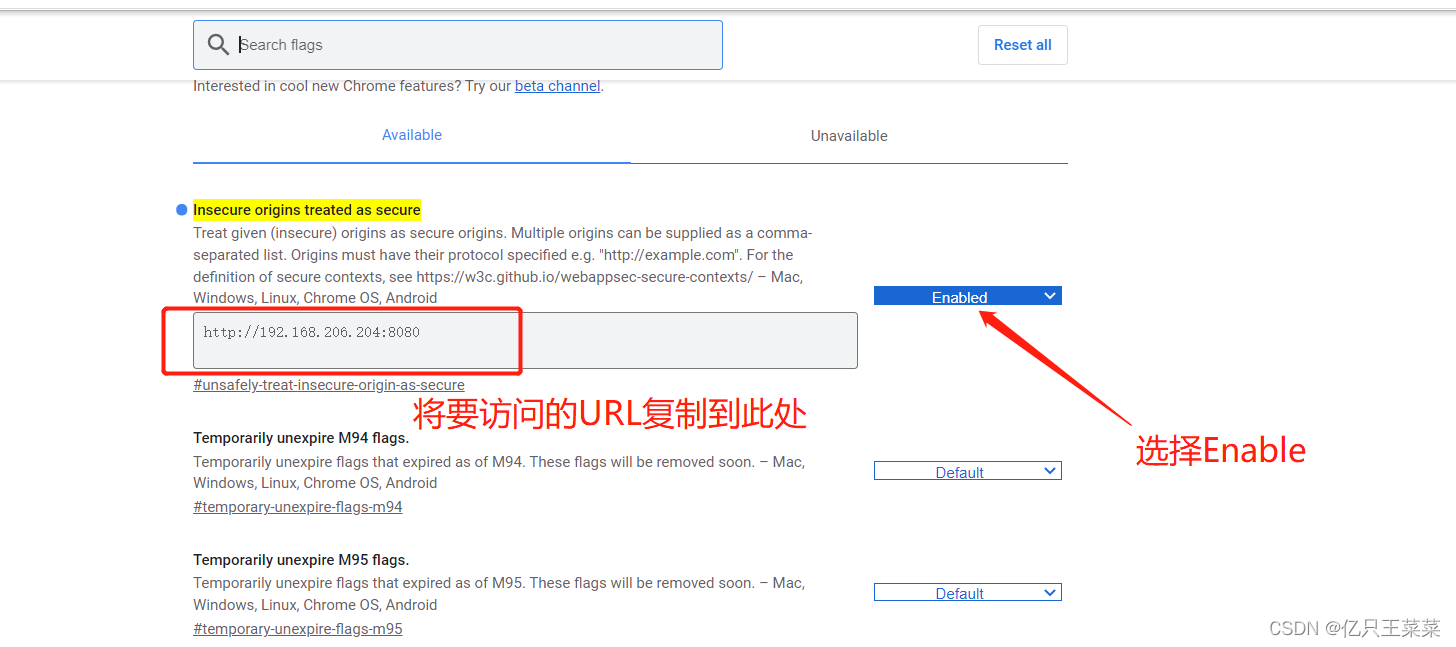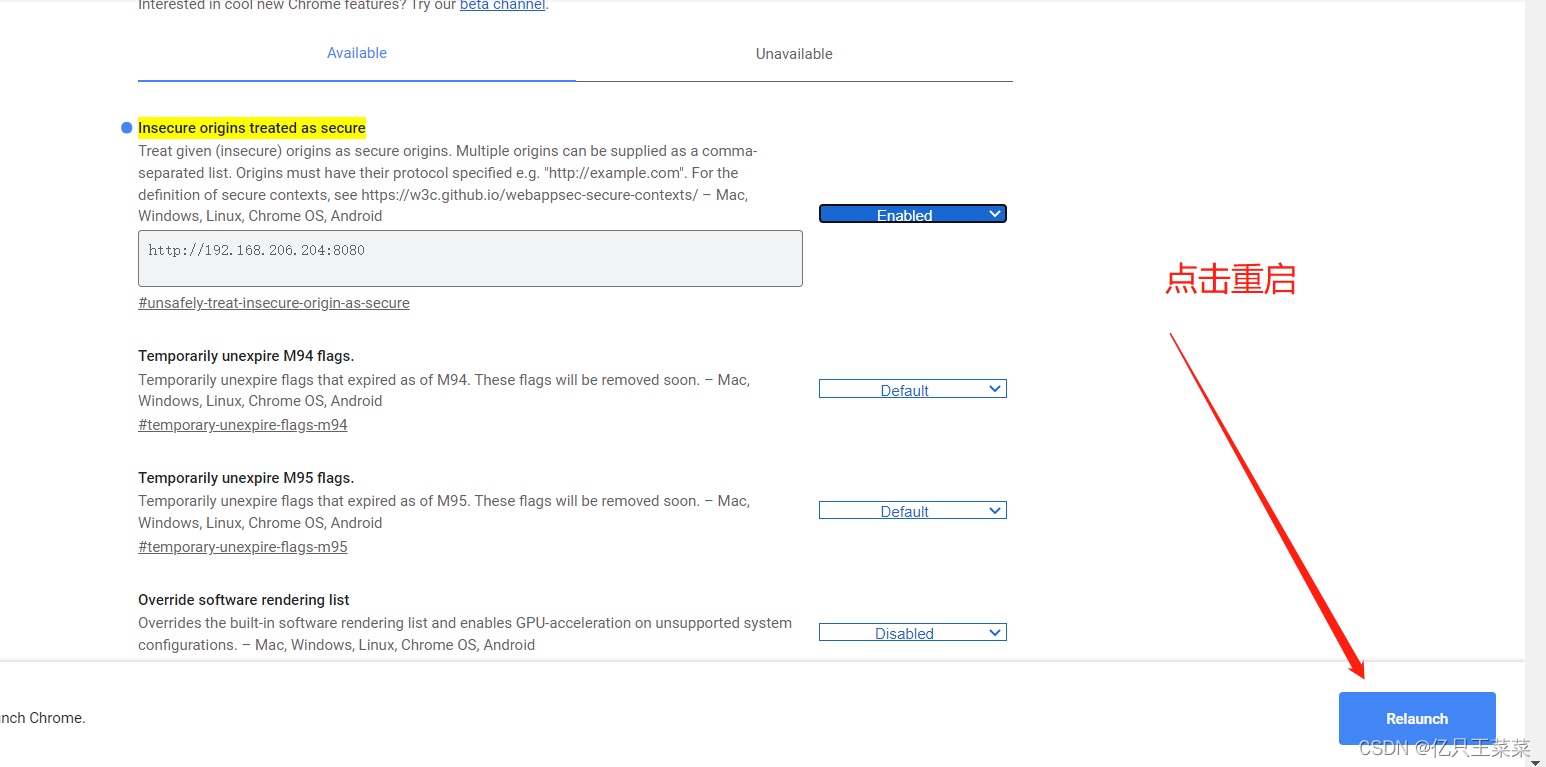WebSocket+Vue+SpringBoot实现语音通话

参考文章
- 整体思路
前端点击开始对话按钮后,将监听麦克风,获取到当前的音频,将其装化为二进制数据,通过websocket发送到webscoket服务端,服务端在接收后,将消息写入给指定客户端,客户端拿到发送过来的二进制音频后再转化播放
-
注意事项
由于音频转化后的二进制数据较大,websocket默认的消息传输大小不能被接收,所以需要通过 @OnMessage(maxMessageSize=5242880)注解进行调整 -
Vue代码
<template><div class="play-audio"><el-button @click="startCall" ref="start">开始对讲</el-button><el-button @click="stopCall" ref="stop">结束对讲</el-button></div>
</template><script>
export default {data() {return {ws: null,mediaStack: null,audioCtx: null,scriptNode: null,source: null,play: true}},methods: {initWs1() {//设置好友IDlet recipientId=localStorage.getItem('userId')=="2"?"1":"2";this.ws = new WebSocket('ws://192.168.206.204:8081/video/'+localStorage.getItem('userId')+"/"+recipientId)this.ws.onopen = () => {console.log('socket 已连接')}this.ws.binaryType = 'arraybuffer'this.ws.onmessage = ({ data }) => {console.log("接收到的数据--》"+ data)// 将接收的数据转换成与传输过来的数据相同的Float32Arrayconst buffer = new Float32Array(data)// 创建一个空白的AudioBuffer对象,这里的4096跟发送方保持一致,48000是采样率const myArrayBuffer = this.audioCtx.createBuffer(1, 4096, 48000)// 也是由于只创建了一个音轨,可以直接取到0const nowBuffering = myArrayBuffer.getChannelData(0)// 通过循环,将接收过来的数据赋值给简单音频对象for (let i = 0; i < 4096; i++) {nowBuffering[i] = buffer[i]}// 使用AudioBufferSourceNode播放音频const source = this.audioCtx.createBufferSource()source.buffer = myArrayBufferconst gainNode = this.audioCtx.createGain()source.connect(gainNode)gainNode.connect(this.audioCtx.destination)var muteValue = 1if (!this.play) { // 是否静音muteValue = 0}gainNode.gain.setValueAtTime(muteValue, this.audioCtx.currentTime)source.start()}this.ws.onerror = (e) => {console.log('发生错误', e)}this.ws.onclose = () => {console.log('socket closed')}},// 开始对讲startCall() {this.play = truethis.audioCtx = new AudioContext()this.initWs1()// 该变量存储当前MediaStreamAudioSourceNode的引用// 可以通过它关闭麦克风停止音频传输// 创建一个ScriptProcessorNode 用于接收当前麦克风的音频this.scriptNode = this.audioCtx.createScriptProcessor(4096, 1, 1)navigator.mediaDevices.getUserMedia({ audio: true, video: false }).then((stream) => {this.mediaStack = streamthis.source = this.audioCtx.createMediaStreamSource(stream)this.source.connect(this.scriptNode)this.scriptNode.connect(this.audioCtx.destination)}).catch(function (err) {/* 处理error */console.log('err', err)})// 当麦克风有声音输入时,会调用此事件// 实际上麦克风始终处于打开状态时,即使不说话,此事件也在一直调用this.scriptNode.onaudioprocess = (audioProcessingEvent) => {const inputBuffer = audioProcessingEvent.inputBuffer// console.log("inputBuffer",inputBuffer);// 由于只创建了一个音轨,这里只取第一个频道的数据const inputData = inputBuffer.getChannelData(0)console.log("调用")// 通过socket传输数据,实际上传输的是Float32Arrayif (this.ws.readyState === 1) {// console.log("发送的数据",inputData);this.ws.send(inputData)}}},// 关闭麦克风stopCall() {this.play = falsethis.mediaStack.getTracks()[0].stop()this.scriptNode.disconnect()}}
}
</script>-java代码
webscoket配置类
package com.example.software.config;
import org.springframework.context.annotation.Bean;
import org.springframework.context.annotation.Configuration;
import org.springframework.web.socket.config.annotation.EnableWebSocket;
import org.springframework.web.socket.server.standard.ServerEndpointExporter;/* @Description: websocket配置*/
@Configuration
@EnableWebSocket
public class WebSocketConfig {@Beanpublic ServerEndpointExporter serverEndpointExporter() {return new ServerEndpointExporter();}
}webscoket服务类
package com.example.software.service.webscoket;import cn.hutool.core.map.MapUtil;
import cn.hutool.core.util.StrUtil;
import cn.hutool.json.JSONUtil;
import lombok.extern.slf4j.Slf4j;
import org.springframework.beans.factory.annotation.Autowired;
import org.springframework.stereotype.Controller;import javax.websocket.*;
import javax.websocket.server.PathParam;
import javax.websocket.server.ServerEndpoint;
import java.io.BufferedInputStream;
import java.io.IOException;
import java.io.InputStream;
import java.nio.ByteBuffer;
import java.util.ArrayList;
import java.util.HashMap;
import java.util.List;
import java.util.Map;
import java.util.concurrent.ConcurrentHashMap;/* @Author:wf* @Date 2023/5/14 13:55* 消息收发/
@Controller
@ServerEndpoint(value = "/video/{senderID}/{recipientId}")
@Slf4j
public class WebSocketServer {/ 当前在线连接数。应该把它设计成线程安全的 */private static int onlineCount = 0;/ 存放每个客户端对应的MyWebSocket对象。实现服务端与单一客户端通信的话,其中Key可以为用户标识 */private static ConcurrentHashMap<String, Session> webSocketSet = new ConcurrentHashMap<String, Session>();/ 与某个客户端的连接会话,需要通过它来给客户端发送数据 */private Session WebSocketsession;/ 当前发消息的人员编号 */private String senderID = "";/* 连接建立成功调用的方法* @param param 发送者ID,是由谁发送的* @param WebSocketsession 可选的参数。session为与某个客户端的连接会话,需要通过它来给客户端发送数据*/@OnOpenpublic void onOpen(@PathParam(value = "senderID") String param, @PathParam(value = "recipientId") String recipientId,Session WebSocketsession) {System.out.println("人员--------------编号:"+param+":加入聊天");System.out.println("盆友是:"+recipientId+"");//接收到发送消息的人员编号senderID = param;System.out.println("senderID:"+senderID);//设置消息大小最大为10M,这种方式也可以达到效果,或者使用下面的 @OnMessage(maxMessageSize=5242880)//The default buffer size for text messages is 8192 bytes.消息超过8192b,自动断开连接// WebSocketsession.setMaxTextMessageBufferSize(10*1024*1024);
// WebSocketsession.setMaxBinaryMessageBufferSize(10*1024*1024);//加入map中,绑定当前用户和socketwebSocketSet.put(param, WebSocketsession);//在线数加1addOnlineCount();}/* 连接关闭调用的方法*/@OnClosepublic void onClose() {if (StrUtil.isNotBlank(senderID)) {//从set中删除webSocketSet.remove(senderID);//在线数减1subOnlineCount();}}/* 收到客户端消息后调用的方法设置最大接收消息大小*/@OnMessage(maxMessageSize=5242880)public void onMessage(@PathParam(value = "senderID") String senderID ,@PathParam(value = "recipientId") String recipientId,InputStream inputStream) {System.out.println(senderID+":发送给"+recipientId+"的消息-->"+inputStream);try {byte[] buff = new byte[inputStream.available()];inputStream.read(buff, 0, inputStream.available());Session session = webSocketSet.get("2");synchronized (session) {//给2号发送session.getBasicRemote().sendBinary(ByteBuffer.wrap(buff));}} catch (Exception e) {e.printStackTrace();}}/* 发生错误时调用 @param session* @param error*/@OnErrorpublic void onError(Session session, Throwable error) {error.printStackTrace();}/* 为指定用户发送消息 @param message 消息内容* @throws IOException*/public void sendMessage(String message) throws IOException {//加同步锁,解决多线程下发送消息异常关闭synchronized (this.WebSocketsession){this.WebSocketsession.getBasicRemote().sendText(message);}}/* 获取当前在线人数* @return 返回当前在线人数*/public static synchronized int getOnlineCount() {return onlineCount;}/* 增加当前在线人数*/public static synchronized void addOnlineCount() {WebSocketServer.onlineCount++;}/* 减少当前在线人数*/public static synchronized void subOnlineCount() {WebSocketServer.onlineCount--;}}- 测试方法
1.使用两个浏览器模拟两个用户,首先在浏览器本地存储一个用户ID
用户A–谷歌浏览器:

用户B–火狐浏览器

2.点击按钮,进行测试
3.关于谷歌浏览器提示TypeError: Cannot read property ‘getUserMedia’ of undefined
原因:chrome下获取浏览器录音功能,因为安全性问题,需要在localhost或127.0.0.1或https下才能获取权限
解决方案:
1.网页使用https访问,服务端升级为https访问,配置ssl证书
2.使用localhost或127.0.0.1 进行访问
3.修改浏览器安全配置(最直接、简单)
a.首先在chrome浏览器中输入如下指令
chrome://flags/#unsafely-treat-insecure-origin-as-secure

b.然后开启 Insecure origins treated as secure
在下方输入栏内输入你访问的地址url,然后将右侧Disabled 改成 Enabled即可

c.然后浏览器会提示重启, 点击Relaunch即可



